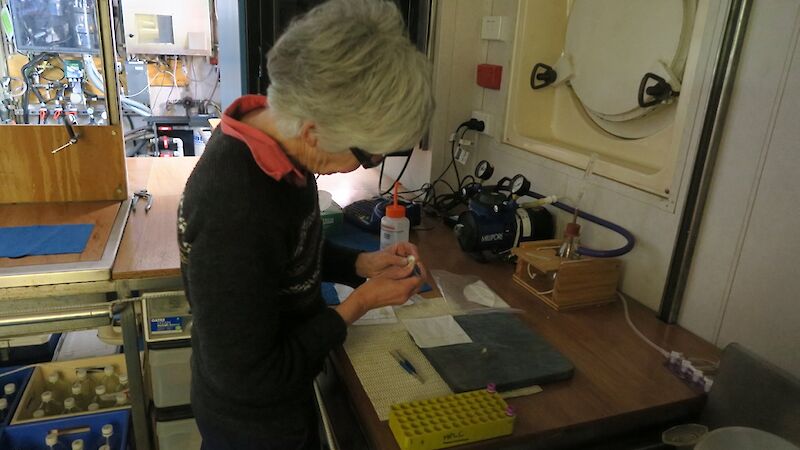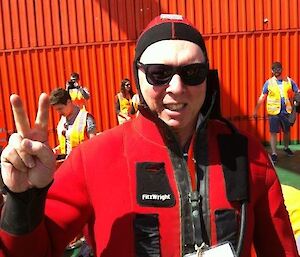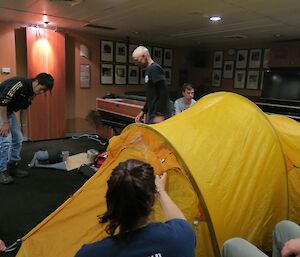4 November
After a few days' delay we boarded the Aurora Australis and left Hobart last Thursday morning. The ship carries 23 crew and 97 station personnel and scientists going to Davis, as well as personnel travelling on to Mawson. Before leaving port we had various training and orientation sessions, including putting on an immersion suit and finding our muster stations. The training continued at sea and over the past few days we had further inductions on travelling on ice, the use of radios and how to use survival kits, maps, compasses and GPS units.
After a few days of rough conditions the weather has now calmed down and most people have found their sea legs. The expeditioners use their spare time to look for wildlife and we have an iceberg sweep going - a prize for the person who best predicts the first iceberg visible from the ship by the naked eye. We have passed one, but it was hidden in fog and only discernible with the ship’s radar — so it didn’t count. The ship has been making good progress and we expect to hit the edge the sea ice in 1–2 days.
Some of us have volunteered to do underway water sampling for Australian Antarctic Division colleagues who study the distribution of phytoplankton (microscopic algae) in the Southern Ocean. While steaming south/south-west we are crossing different water masses and fronts, and we are taking water samples to characterise the phytoplankton communities.
The on-board team has been sampling water 5 times a day and tries to take additional samples when the ship is close to an overpassing satellite, which measures the colour of the ocean — a spaceborne measure for phytoplankton biomass. The ocean colour is used to map the distribution of phytoplankton, which form the base of the Southern Ocean food web. The volunteers on the ship are collecting and filtering water samples for microscopic analyses and the determination of algal pigments. These analyses help to calibrate and validate the satellite observations, building a long-term and large-scale picture of the seasonal and spatial distribution of phytoplankton in the Southern Ocean.
Klaus Meiners — Chief Investigator



